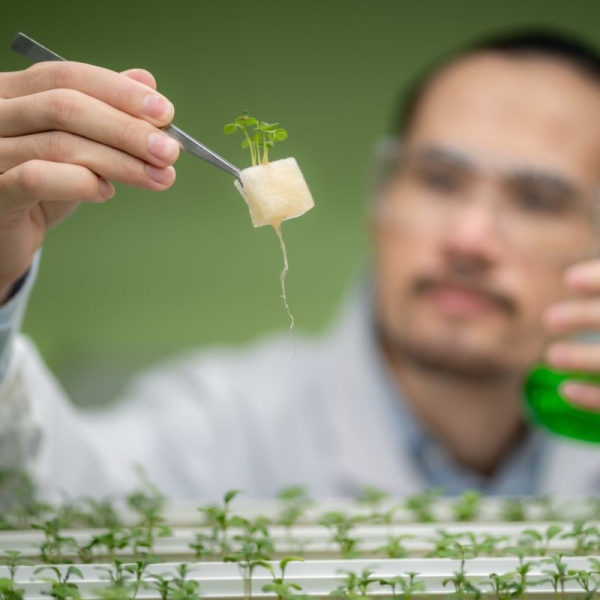23 Sep 2024 — Scientists developed a method to multiply the beta-carotene content in plant leaves up to 30 times through biotechnological techniques and treatments with high light intensity. This process creates new places to store the carotenoid without affecting vital processes like photosynthesis. Beta-carotene is one of the main carotenoids or pigments in plants, and it has antioxidant, immunostimulant and cognitive-enhancing properties.
The carotenoid is the primary precursor of retinoids, including vitamin A. Retinoids are chemical compounds essential to bodily function, such as vision, cell proliferation, differentiation and the immune system.
The researchers used tobacco plants (Nicotiana benthamiana) as a laboratory and replicated the process in lettuce (Lactuca sativa) as a cultivation model.
“Leaves need carotenoids such as beta-carotene in the photosynthetic complexes of chloroplasts for their proper functioning,” explains lead researcher Manuel Rodríguez Concepción from the Institute for Plant Molecular and Cell Biology at the CSIC University in València, Spain.
“When too much or too little beta-carotene is produced in the chloroplasts, they stop functioning, and the leaves eventually die. Our work has successfully produced and accumulated beta-carotene in cellular compartments where it is not normally found by combining biotechnological techniques and treatments with high light intensity,” he details.
Biofortification of vegetables
The study, published in The Plant Journal, indicates that it’s possible to multiply leaves’ beta-carotene levels by storing the compounds outside photosynthetic complexes, such as plastoglobules and fat storage vesicles. These do not usually accumulate carotenoids.
“Stimulating the formation and development of plastoglobules with molecular techniques and intense light treatments increases not only the accumulation of beta-carotene but also its bioaccessibility, i.e., the ease with which it can be extracted from the food matrix to be absorbed by our digestive system,” underscores Luca Morelli, the study’s first author.

Increasing beta-carotene levels in lettuce leaves gave them a characteristic golden color (Image credit: CSIC University).The researchers highlight that producing and storing beta-carotene at high levels and in a bioaccessible form “represents a significant advance for improving nutrition through biofortification of vegetables such as lettuce, chard or spinach without giving up their characteristic scent and flavor.”
In addition, the team found they could combine beta-carotene synthesis in plastoglobules with production outside of chloroplasts through biotechnology. This combination resulted in a 30-fold increase in accessible beta-carotene levels compared to untreated leaves. It also gave the lettuce leaves a characteristic golden color.
Addressing vitamin A deficiency
Research indicates that the global prevalence of deficiency in at least one of three core micronutrients — iron, zinc and vitamin A — is 56% for preschool-aged kids and 69% for non-pregnant women of reproductive age. Both vitamin A and zinc are essential for eye health.
Earlier this year, Nutrition Insight discussed the controversy surrounding a “golden rice” variety with Plants for the Future European Technology Platform, an NGO representing agriculture-focused academia, industry and farming communities.
This rice is a genetically modified variety developed to address vitamin A deficiencies in low-income regions. Researchers added genes to the plant so it could produce beta-carotene. Although The Philippines was the first country to approve commercial cultivation of the variety, opposition focuses on its genetic modification and associated fears about safety.
Meanwhile, the European Food Safety Authority Panel on Nutrition, Novel Foods and Food Allergens released a scientific opinion revising the tolerable upper intake level (UL) for preformed vitamin A and beta-carotene. The panel proposed to retain the UL of preformed vitamin A for adults (3000 μg retinol equivalents daily), but advised reducing this for infants, adolescents and postmenopausal women.

